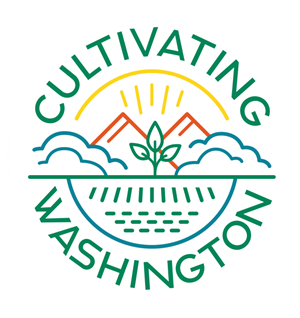In 1852, Catholic Missionary Oblates of Mary Immaculate Father Charles Pandosy and Father Eugene Casmire Chirouse (1821-1892), in company with Yakama people, labor with shovels to dig the first irrigation ditch in the Yakima Valley. In time irrigation will so transform the natural sagebrush desert (an ecology known as shrub-steppe) that the Yakima Valley will become known as the fruit bowl of the nation.
Fathers Pandosy and Chirouse arrived in the Yakima Valley in 1847. In 1852, at the invitation of Yakama Nation Chief Kamiakin (ca. 1800-1877), Father Pandosy and Father Louis Joseph D’herbomez built the Saint Joseph Mission on the banks of Ahtanum Creek, which flowed through Kamiakin’s summer camping grounds. Father Chirouse, stationed at Holy Cross Mission on the lower Ahtanum, was a frequent visitor.
Kamiakin, his people, and the missionaries were on very friendly terms. Kamiakin brought his children to the priests for baptism into the Catholic faith, and many Yakamas followed suit.
The Yakima Valley, naturally composed of dry grassland, was sufficiently fertile even with only the average eight inches of rainfall per year to feed the indigenous people without irrigation for centuries. The desert plants that grew there were harvested in such a manner that they would re-seed themselves without cultivation. The crops were primarily roots and berries.
White settlers, including the missionary priests, were quick to dismiss the natural balance of this arrangement. They saw in the rich, porous soil the potential for a much larger output than was possible with only rainfall.
The Fathers and the Yakamas planted a small garden and irrigated it with the Ahtanum Creek water that flowed through their canal. They grew wheat and corn, along with melons, potatoes, and pumpkins. Chief Kamiakin particularly enjoyed walking through this lush oasis in the midst of the familiar sagebrush.
The Yakama Indian War of 1855, however, put an end to this fledgling demonstration of the Yakima Valley’s farming potential. Both the missionaries and the Yakama fled the compound, which United States Army troops from Fort Vancouver burned to the ground.
Within two decades, first small and then much larger irrigation canals would be dug throughout the Yakima Valley, eventually irrigating 350,000 acres of orchards, vineyards, and farms.
Note: This article is part of Cultivating Washington, The History of Our State’s Food, Land, and People, which includes more agriculture-related content, vidoes, and curriculum.

